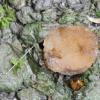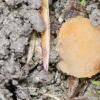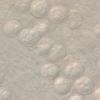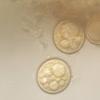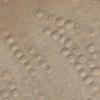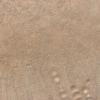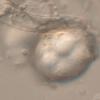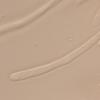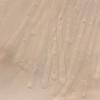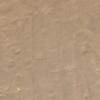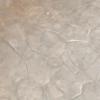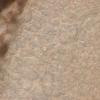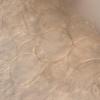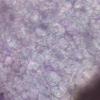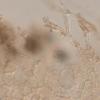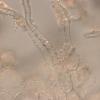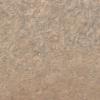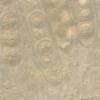
18-12-2025 21:17
Pol DebaenstThe identification took me to Byssonectria deformi

15-12-2025 07:09
 Danny Newman
Danny Newman
indet. Rutstroemiaceae sp. on unk. fallen leavesMc

19-12-2025 10:10
Patrice TANCHAUDBonjour, récolte réalisée en milieu dunaire, a

18-12-2025 17:23
 Bruno Coué
Bruno Coué
Bonjour,je serais heureux d'avoir votre avis sur c

18-12-2025 18:07
Margot en Geert VullingsThese plumes were found on rotten wood.They strong

17-12-2025 18:35
 Michel Hairaud
Michel Hairaud
Bonjour à tous/Hi to everyone I am passing along

15-12-2025 15:48
 Danny Newman
Danny Newman
Melanospora cf. lagenaria on old, rotting, fallen

15-12-2025 15:54
 Johan Boonefaes
Johan Boonefaes
Unknown anamorph found on the ground in coastal sa
Terrestric asco from Hungarian lowland
Zuzana Sochorová (Egertová),
06-11-2019 11:49
 Hello,
Hello,I cannot find a name for this fungus found a few days ago in west Hungary, 120 m asl. It grew on wet soil in a field.
Unfortunately the material was limited and not in the best condition, so I e.g. couldn´t see any vital asci.
Apothecia 2.3-4.5 mm in diameter, brownish-ochre, sessile, without conspicious hairs.
Hymenium about 270 micrometers wide.
Asci octosporic, uniseriate, clavate, IKI-.
Ascospores subglobose, 17.5-21 x 15-18 micrometers, hyaline, thick-walled, containing several smaller guttules which in dry state fuse into one large guttule. The surface of the ascospore is ornamented with very tiny warts.
Paraphyses straight, septate, without lipid bodies, 3.5-4.3 micrometers wide in lower parts, apex 5.3-6 micrometers, terminal cell 43-94 micrometers long, close to septa tiny hyaline bodies.
Medulla merged with subhymenium, t. intricata, cells 2-10 micrometers wide, hyaline.
Ectal excipulum 170-210 micrometers wide at base, 75-170 micrometers wide at flanks, t. angularis, cells hyaline, containing non-refractive vacuoles, 13-32 x 14.5-24 micrometers, outermost cells thick-walled (about 1 micrometer), having ochre-brown walls. Brown-walled hairs arise from the cells of ectal excipulum.
Thanks, Zuzana
Zuzana Sochorová (Egertová),
06-11-2019 11:52
Miguel Ángel Ribes,
06-11-2019 15:45

Re : Terrestric asco from Hungarian lowland
Around Pulvinula convexella??
Miguel Ángel
Miguel Ángel
Zuzana Sochorová (Egertová),
06-11-2019 17:00

Re : Terrestric asco from Hungarian lowland
Dear Miguel, thank you very much for your opinion. However, I would exclude Pulvinula due to paraphyses totally different in shape and content and due to the hairs.
Gernot Friebes,
06-11-2019 21:41
Re : Terrestric asco from Hungarian lowland
Dear Zuzana,
interesting find. I don't know this species but my suggestion would be to compare with Tricharina subglobispora. Here is Svrcek's original description: http://www.czechmycology.org/_cm/CM283.pdf#page=7 (on page 136).
Maybe you can have a look at the material cited by Svrcek in herbarium W?
Best wishes,
Gernot
interesting find. I don't know this species but my suggestion would be to compare with Tricharina subglobispora. Here is Svrcek's original description: http://www.czechmycology.org/_cm/CM283.pdf#page=7 (on page 136).
Maybe you can have a look at the material cited by Svrcek in herbarium W?
Best wishes,
Gernot
Zuzana Sochorová (Egertová),
06-11-2019 22:11

Re : Terrestric asco from Hungarian lowland
Dear Gernot,
thank you very much for your reply.
Tricharina subglobispora really seems to be similar, nevertheless, I can see some differences between my find and Svrcek's description:
1) excipulum described as t. globulosa vs. medullary excipulum of t. intricata in the Hungarian find (maybe medulla wasn't distinct in herbarium material studied by Svrcek?)
2) smooth spores vs. finely warted spores (but the warts are really very inconspicuous, easy to overlook)
3) spores without guttules vs. filled with several guttules - believe even in the herbarium material spores would contain one large guttule.
It's a pity the type is so old (from 1908), so probably no chance to obtain sequences.
Best regards, Zuzana
thank you very much for your reply.
Tricharina subglobispora really seems to be similar, nevertheless, I can see some differences between my find and Svrcek's description:
1) excipulum described as t. globulosa vs. medullary excipulum of t. intricata in the Hungarian find (maybe medulla wasn't distinct in herbarium material studied by Svrcek?)
2) smooth spores vs. finely warted spores (but the warts are really very inconspicuous, easy to overlook)
3) spores without guttules vs. filled with several guttules - believe even in the herbarium material spores would contain one large guttule.
It's a pity the type is so old (from 1908), so probably no chance to obtain sequences.
Best regards, Zuzana
Marcel Vega,
07-11-2019 08:26
Re : Terrestric asco from Hungarian lowland
Hi Zuzana,
found this one as well some years ago.
Will send you an email.
Cheers,
Marcel
found this one as well some years ago.
Will send you an email.
Cheers,
Marcel
Uwe Lindemann,
07-11-2019 23:16
Re : Terrestric asco from Hungarian lowland
After Yang & Korf 1985: 522 (their Tricharina monograph) the type of T. subglobispora consists of two different species: 1. Sphaerosporella brunnea and 2. Trichophaea woolhopeia.
Best, Uwe
Mlcoch Patrik,
08-11-2019 07:11

Re : Terrestric asco from Hungarian lowland
Yes, Pulvinula it isn´t. For example Baral has on the Google drive in "C4 Pyronemataceae s.str." collections "Pezizales 19.8.91". Can it be?

